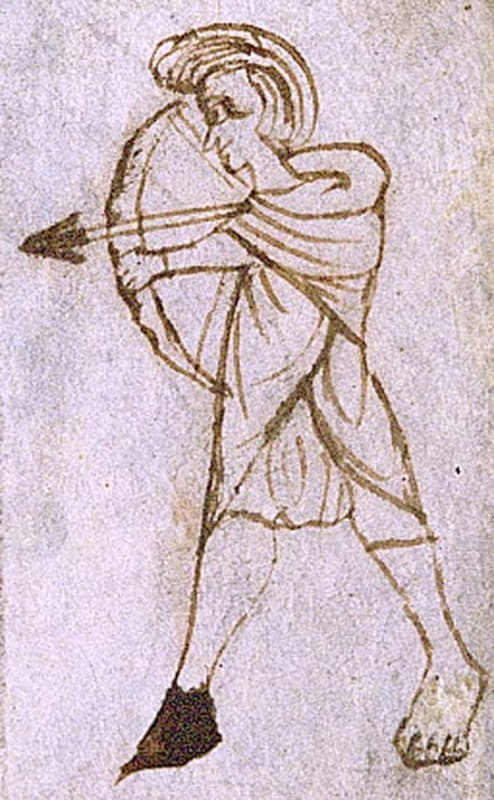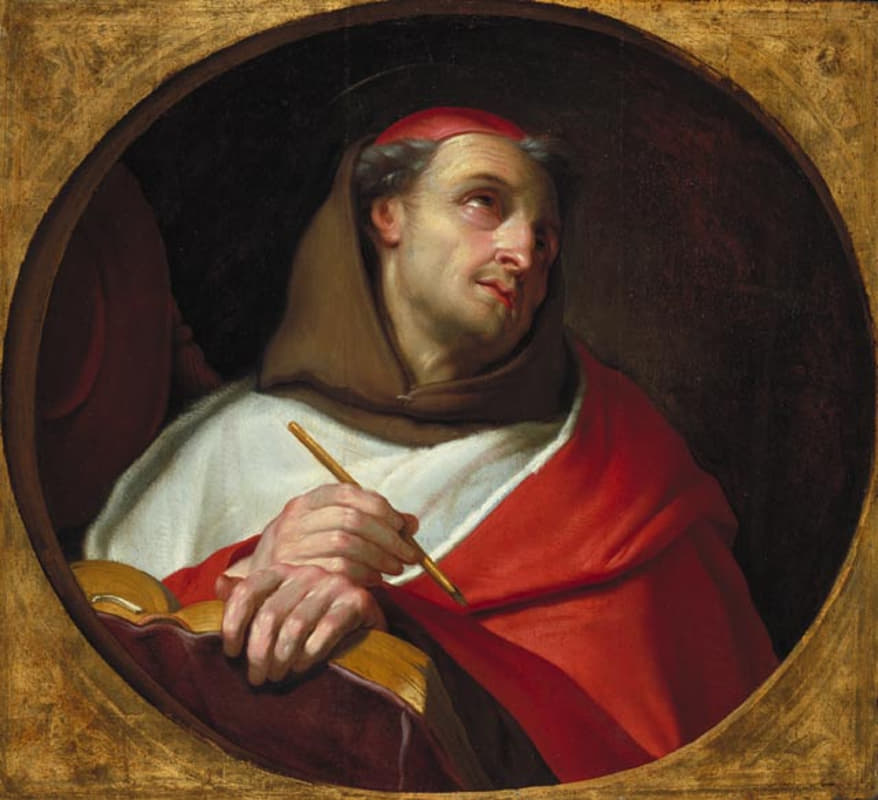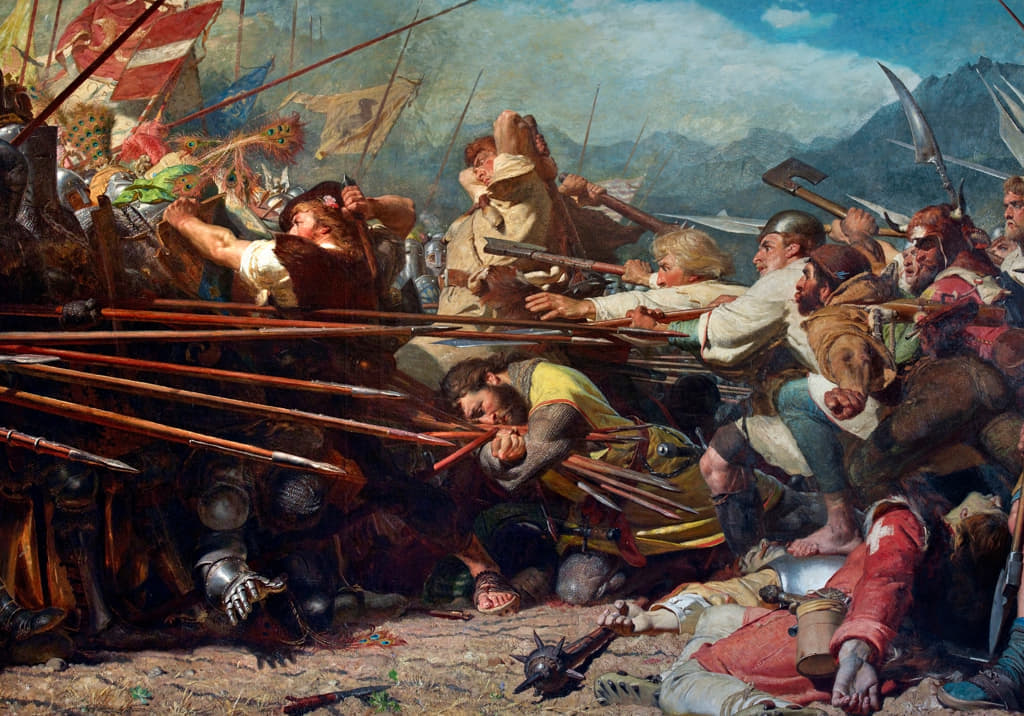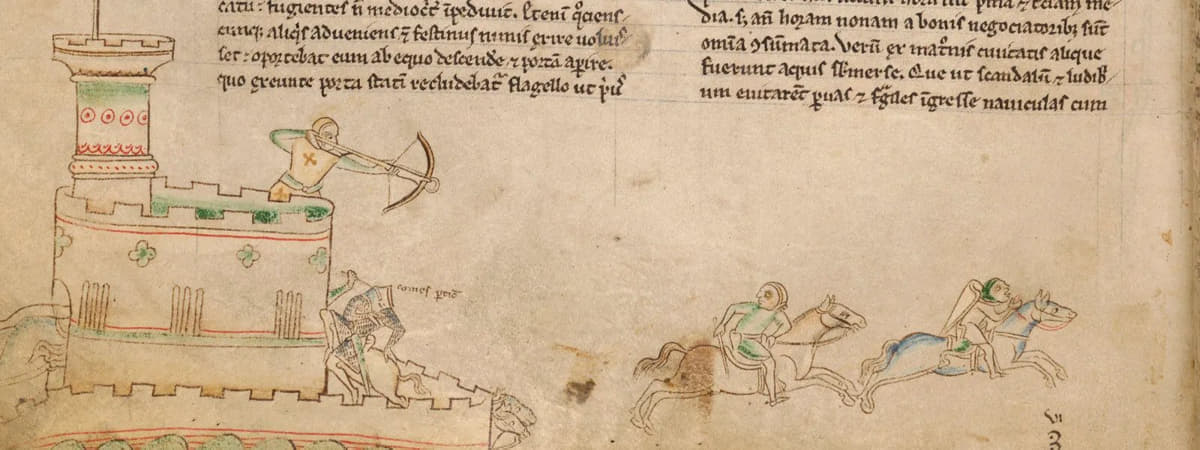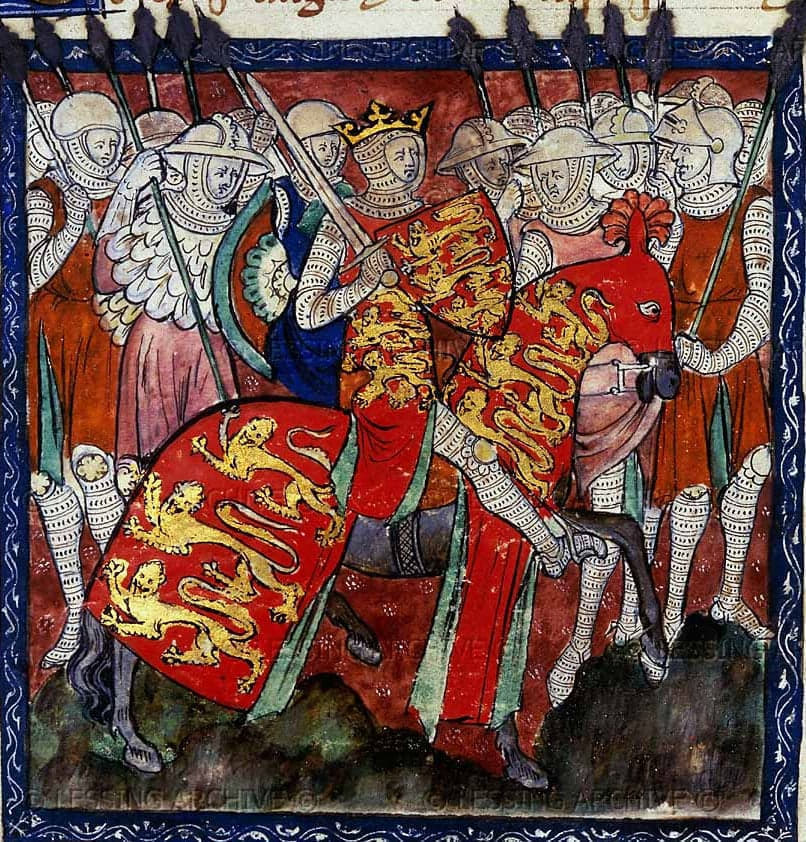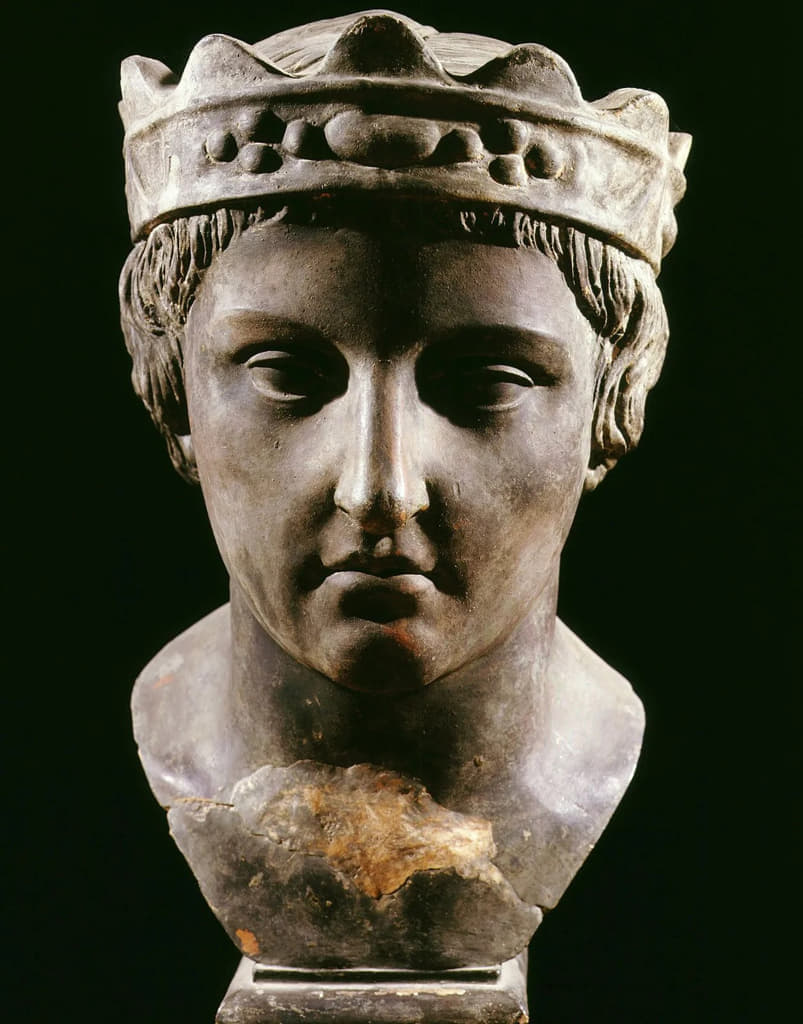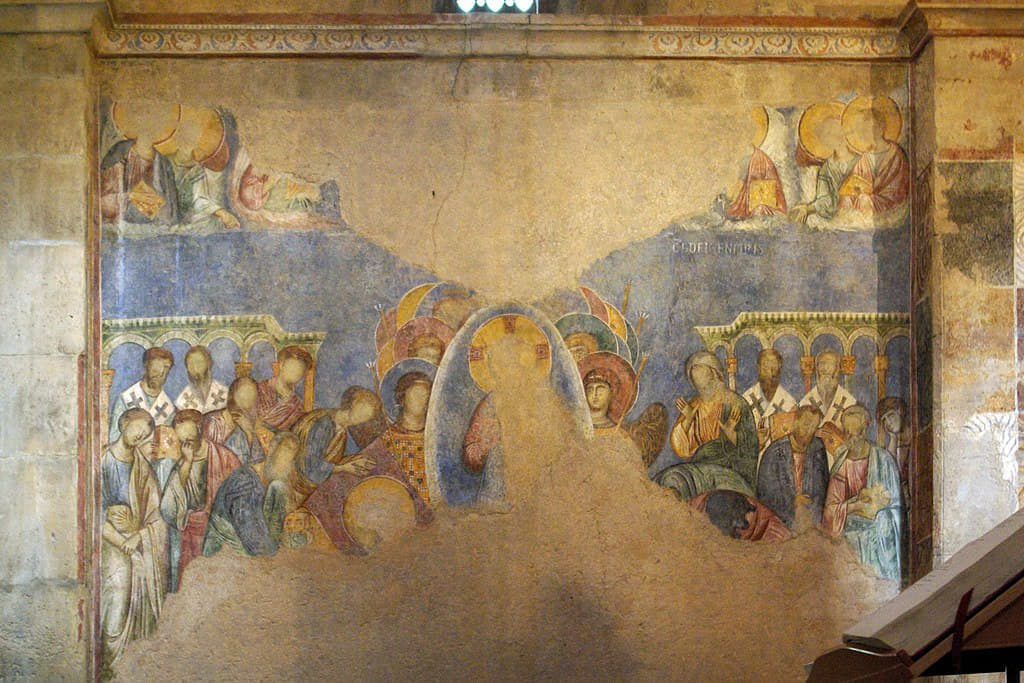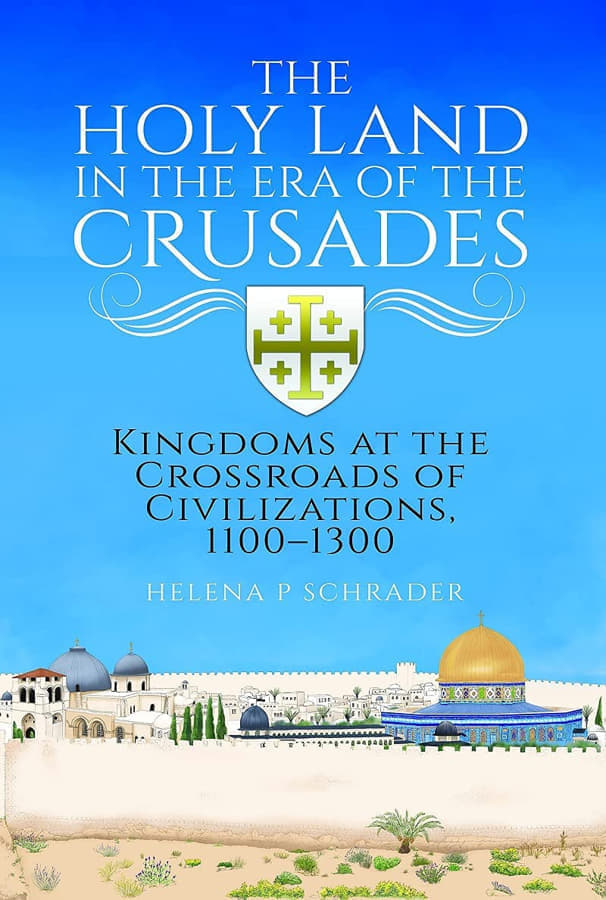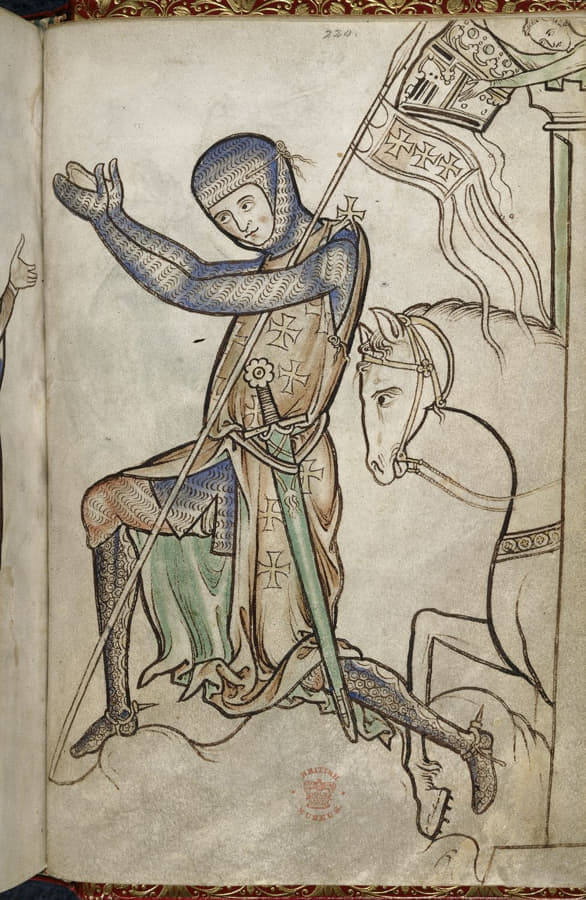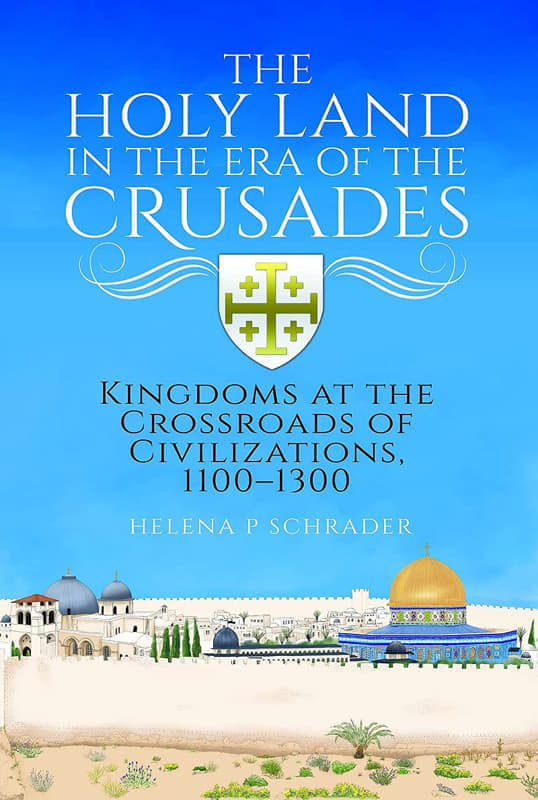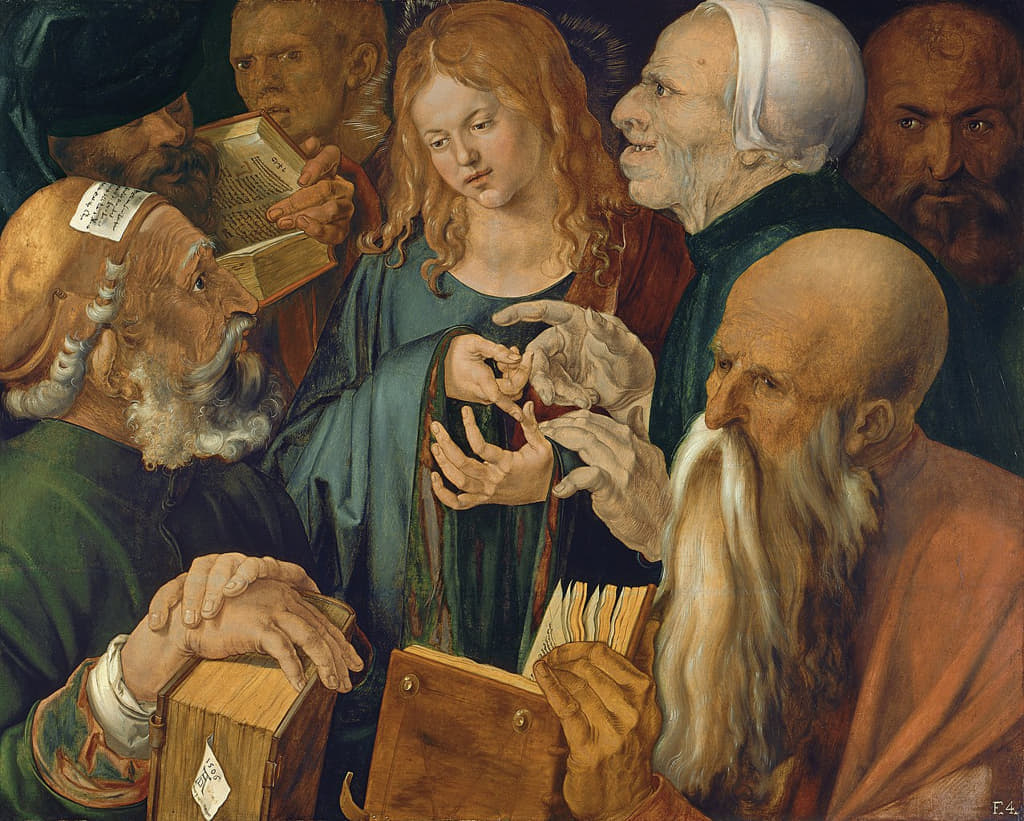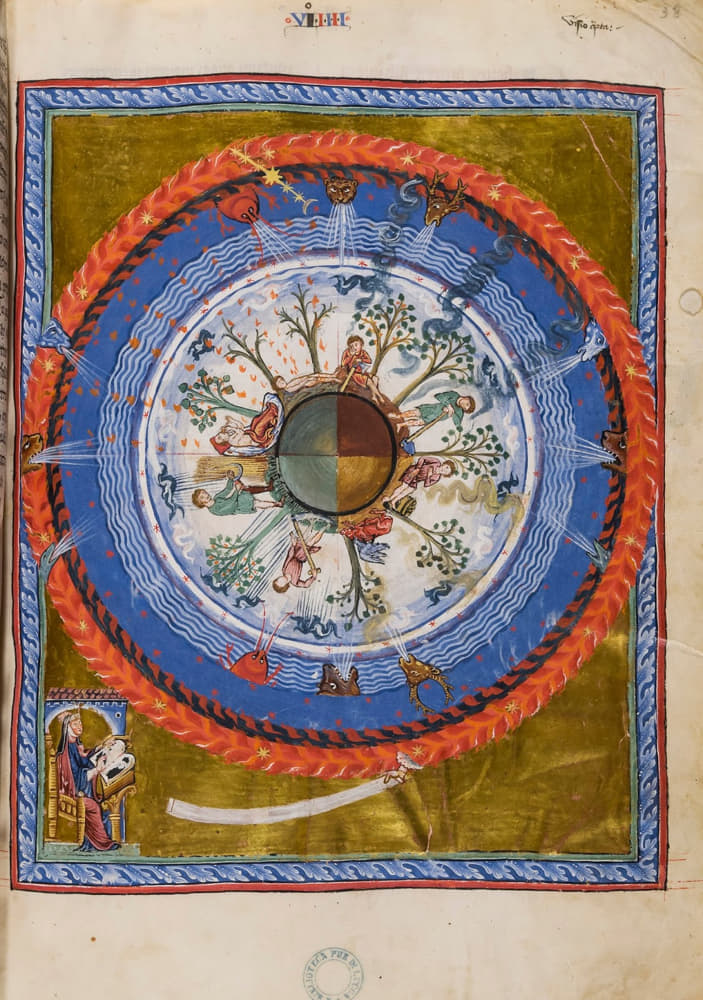Introduction
Frederick II Hohenstaufen has long enjoyed the reputation of an enlightened monarch. From the sixteenth to the early twentieth century, reverence for the nation-state as the ideal form of government inspired scholars to see his policies as “progressive.” In the nineteenth and early twentieth centuries, German scholars in search of a medieval figure that could bolster national identity seized upon Frederick as a proto-German hero. Nowadays, it is more often his bloodless crusade and his alleged religious tolerance that spark admiration. Simultaneously, contempt for feudalism (a tenet of the “Enlightenment”) and hatred of the papacy (a tenet of the Reformation) have long combined to discredit Frederick’s opponents in the crusader states.
Because Frederick II’s life was packed with dramatic events, colorful characters, significant victories, and astonishing accomplishments, his eight months in the Holy Land are generally treated as no more than a footnote to the greater drama that played out in Western Europe. Abbreviated references to his sojourn in Outremer unremittingly focus on his bloodless crusade. His opponents in the crusader states are almost uniformly characterized as “bloodthirsty” and “bigoted.” They are dismissed for failing to appreciate the “genius” of the Holy Roman Emperor, his consummate diplomatic skills, and his enlightened treatment of the Muslim enemy. Most modern accounts imply that the civil war that followed in the wake of the Sixth Crusade was nothing more than intolerant and obstinate resistance to the Holy Roman Emperor’s enlightened policies on the part of his chauvinistic subjects in the Holy Land.
Yet, does such an interpretation stand up to scrutiny? This article seeks to reassess Frederick II’s clash with his barons in the Holy Land by focusing on his opponents and their objectives and on Frederick II in the context of Outremer rather than his role as Holy Roman Emperor.
The Protagonists
Frederick II Hohenstaufen and the Holy Land
Frederick II’s involvement in Outremer was based on two separate yet intertwined factors. First, he had publicly taken crusader vows to liberate Jerusalem from Muslim control, and second, he married the heiress to the Kingdom of Jerusalem.
Friedrich II Hohenstaufen first “took the cross” and vowed to lead a new crusade to regain Christian control of Jerusalem at his coronation as “King of the Romans” in Aachen on 25 July 1215. He renewed his crusading vow at his coronation as Holy Roman Emperor on 22 November 1220―by which time the Fifth Crusade had already bogged down at Damietta. Due to a Muslim insurrection in Sicily, Friedrich failed to join that crusade as promised. Another crusade planned for 1225 was postponed until 1227. Although a crusading army assembled that summer, an infectious disease decimated the ranks while it was still in Italy. Frederick II put to sea, only to return to Brindisi due to illness. Pope Gregory IX promptly ex-communicated him. His subsequent military expedition to the Holy Land was not sanctioned by the pope, and the Church labeled it an “anti-crusade.”
Meanwhile, Friedrich II had married Yolanda, heiress to the Kingdom of Jerusalem. Yolanda’s mother, Maria I, had died giving birth to her. Her regent during her minority was her father, John of Brienne, her mother’s king-consort. Brienne and the High Court of Jerusalem arranged Yolanda’s marriage to the Holy Roman Emperor, expecting it to ensure military and financial support for their beleaguered kingdom from the most powerful Christian monarch on earth. In November 1225, at age 13, Queen Yolanda sailed to Brindisi for her marriage with Frederick. In April 1228, at 15 years, she died from the complications of childbirth, leaving behind an infant son, Conrad, as heir to the throne of Jerusalem.
By the time Frederick II married Yolanda, he was nearly 31 and had been King of Sicily for a quarter-century, King of the Romans for a decade, and Holy Roman Emperor for five years. The Kingdom of Jerusalem was just one of his many possessions. Furthermore, he had already adopted an absolutist view of the monarchy. While admirers of centralized government portray this as a “modern” attitude, David Abulafia makes a strong case that Frederick’s views were the opposite; Frederick was not so much ahead of his time as he was backward-looking. He considered himself a (divine) Roman Emperor rather than a feudal king. [David Abulafia, Frederick II: A Medieval Emperor, Oxford University Press, 1988.]
The Barons of Outremer
The Kingdom of Jerusalem, created by a council of leading European noblemen in the wake of the First Crusade, was an ideal feudal state. By the time Frederick II arrived in the Levant, the resident nobility had developed a highly sophisticated interpretation of the kingdom’s constitution. Most importantly, the ruling elites in Outremer upheld the concept that government was a contract between the king and his subjects, requiring the consent of the ruled as represented by the High Court. That is, the High Court had to be consulted on matters of state, from the marriage of the royal heiress to treaties and taxes. Specifically, the constitution of Jerusalem gave the High Court the right to elect kings and regents. In addition, it was an already established constitutional principle that the consort of a ruling queen lost his position as co-monarch at her death.
Far from being bloodthirsty, religious bigots, the barons of Outremer were the products and representatives of a multicultural state in which orthodox Christian monasteries multiplied alongside those of the Latin Church and where a vibrant school of Talmudic studies flourished. The Franks of Outremer (as all Latin Christians living in the crusader states were collectively known) had been making treaties with their Muslim neighbors for more than a hundred years before Frederick II arrived. Indeed, at various times they had allied themselves with Muslim powers. They not only spoke Arabic (in addition to French, Latin, and Greek), they were familiar with Islam and Islamic law.
By the mid-thirteenth century, the feudal elite of Outremer was highly educated. The renowned crusades historian Jonathan Riley-Smith goes so far as to claim that “the greatest monument to the western settlers in Palestine, finer even than the cathedrals and castles still dominating the landscape, is the law-book of John of Jaffa, which … is one of the great works of thirteenth-century thought.” [Jonathan Riley-Smith, The Feudal Nobility and the Kingdom of Jerusalem 1174-1277, Macmillan Press, 1973, 230.] The Count of Jaffa was not alone.
An entire school of legal scholars evolved in the early decades of the thirteenth century that produced seven books on legal issues and six other scholarly works that have survived to the present day. Furthermore, the court system in the Kingdom of Jerusalem required jurors and counselors for every trial. These men were all drawn from the knightly class. Finally, unlike their contemporaries in England and France, every knight in the realm sat on the High Court. Consequently, the knights and nobles of Outremer as a class were familiar with the law and constitution of the land.
These men, none of whom were in the Holy Orders, also held fiefs, fought with lance and sword, and commanded troops. In their conflict with Frederick II, they were led by John d’Ibelin, a man immortalized by the contemporary historian Philip de Novare as the “the Old Lord of Beirut.”
John d’Ibelin, Lord of Beirut
John d’Ibelin was the son of Balian, who saved an estimated 60,000 souls from slaughter and slavery by negotiating the surrender of Jerusalem after the walls had been breached in 1187. Balian represented Richard the Lionheart in his final negotiations with Saladin and was one of the leading signatories of the truce ending the Third Crusade. John was Balian’s eldest son by his wife, Maria Comnena, the queen-consort and widow of King Amalric of Jerusalem. Through his mother, John d’Ibelin was half-Greek and half-brother to Queen Isabella I of Jerusalem.
John d’Ibelin was appointed constable of Jerusalem by Aimery de Lusignan, but sometime before 1200, he surrendered the constableship in exchange for being granted the recaptured city and lordship of Beirut. The city and surrounding territory had been taken by Saladin in 1187 and recaptured during the German crusade of 1197. When it was granted to John d’Ibelin, it was in such a ruinous state that the wealthy militant orders had not wanted the burden of reconstruction. John successfully rebuilt the fortifications, castle, port, and city and attracted new inhabitants. He also erected one of the most magnificent palaces in the Latin East. It had tall, glazed windows, walls paneled with polychrome marble, and lifelike mosaic floors. The interior fountains gushed freshwater day and night and drained through discreet underfloor drainage pipes that recycled the water to the garden.
When in April 1205, Queen Isabella I died, leaving her 13-year-old daughter Marie de Montferrat as her successor, the High Court of Jerusalem elected the Lord of Beirut regent. Beirut was then 26 years of age. He ruled for the next five years, notably maintaining the existing truce with the Saracens. He surrendered his position when Queen Marie married John de Brienne, and the couple was crowned.
John and his younger brother Philip took part in the Fifth Crusade under the banner of the King of Cyprus. When King Hugh of Cyprus died unexpectedly in January 1218, the Cypriot High Court elected John’s younger brother, Philip, regent for the eighteen-month-old heir, King Henry. At Philip’s death in 1227, the High Court of Cyprus elected John. The Lord of Beirut held this position when Frederick II arrived in the Holy Land. Up to this point, nothing in John’s life suggested he would lead a revolt against a crowned monarch.
The Sixth Crusade and the Baronial Revolt Against Frederick II in Outremer
Despite his ex-communication, Frederick II set sail for the Holy Land in June 1228 with the declared intent to regain control of Jerusalem for Christendom. His decision to proceed was influenced, if not dictated, by the fact that the Sultan of Egypt, al-Kamil, had secretly offered to deliver Jerusalem to him in exchange for the emperor’s support in the sultan’s war against his brother, al-Mu’azzam, the sultan of Damascus. Confident of success, Frederick had no need for a large military force and set out accompanied by four archbishops, a small contingent of knights, and about 1,000 archers. This was not a crusading army; it was an imperial entourage.
On his way to the Holy Land, Frederick II stopped in Cyprus, a component kingdom of the Holy Roman Empire since 1194. Here he requested that the regent (John d’Ibelin, Lord of Beirut) and—significantly—his children, attend a banquet in Nicosia. The other guests were the 11-year-old King Henry I of Lusignan, along with the nobles and knights of Cyprus, accompanied by their ladies. All the guests wore court robes and were unarmed. Frederick II, however, had hidden armed guards in the palace, and at his signal, they surrounded the Lord of Beirut with drawn swords. Frederick then attempted to bully Beirut into handing over revenue allegedly embezzled from the Cypriot treasury and surrendering the lordship of Beirut in the Kingdom of Jerusalem. With remarkable dignity and coolness, Beirut refused to do either without the judgment of the respective High Courts. He then walked out of the banquet with the bulk of the Cypriot nobility at his heels, leaving his eldest sons and eighteen other youths of noble birth as hostages with the emperor.
Beirut withdrew to the mountain fortresses of Cyprus and readied them to withstand a siege. While this was clearly an act of defiance, it was not an act of treason. Beirut explicitly held the castles for King Henry of Lusignan, for whom he was the legal regent. While the premise may sound disingenuous, later actions proved him honest. Frederick was forced to seek terms. In exchange for Beirut handing the castles over to royal officers, the emperor released the hostages. In addition, Beirut promised to take part in Frederick’s expedition to Syria along with all his vassals, while the emperor agreed in writing to (1) take no action against Beirut or his supporters without a judgment from the responsible court (i.e., the High Courts of Cyprus and Jerusalem respectively), and (2) to bear no malice for all that had passed between them in the preceding months.
As soon Beirut and his men sailed for the mainland, Frederick broke his sworn and signed word by sending imperial mercenaries to Cyprus to attack, harass, and intimidate the wives and children of the men now serving in his army. Simultaneously, he attempted to obtain Christian control of Jerusalem via negotiations with the Sultan of Egypt. Unfortunately, al-Kamil no longer needed assistance from the emperor in his quarrels with his Ayyubid rivals because his brother al-Mu’azzam had died and been succeeded by a weak boy, who al-Kamil now controlled.
Friedrich was in a quandary. He did not have sufficient military force to win a military confrontation with the combined forces of Egypt and Damascus. He could not expect reinforcements from the West because he had been ex-communicated, and other monarchs dared not support him. Meanwhile, the pope had raised an army and was preparing to invade his Kingdom of Sicily with the declared intent of deposing him. Frederick had to return to defend his birthright; Jerusalem had become a liability. To avoid a complete debacle, he approached al-Kamil in search of a negotiated settlement. His exchanges with the sultan became increasingly obsequious and concessionary until 18 February 1229, when a truce was signed between the sultan and the emperor.
Modern commentators generally applaud Friedrich’s performance as enlightened, subtle, and brilliant. Such assessments show a marked lack of understanding for both of the terms of the agreement and the context in which it was made. Despite what is usually claimed, Friedrich II’s treaty singularly failed to secure Christian control of Jerusalem. The treaty did no more than grant Christian access to some of Jerusalem for a limited period of time. The terms explicitly prohibited Christians from setting foot on the Temple Mount, prevented the Franks from building defensive walls, and left strategic castles such as Kerak and Montreal in Muslim hands. Furthermore, Arab sources stress that al-Kamil openly bragged he would “chase” the Christians from Jerusalem as soon as it was convenient. [Francesco Gabrieli (trans)., Arab Historians of the Crusades, University of California Press, 1957, 271.)
In short, the terms of the truce reveal the degree to which Friedrich’s “crusade” was about his power struggle with the pope rather than sustainable Christian control of Jerusalem. Although he made a great show of wearing the imperial crown in the Church of the Holy Sepulchre, the residents of Outremer were not impressed—and said so. Outraged that anyone would dare to criticize his “brilliant” achievement, Frederick laid siege to Templar headquarters in Acre, threatened physical violence to the Patriarch of Jerusalem, ordered the harassment of the mendicant orders, and then departed. As he made his way from the palace to the port to board a ship for Sicily, the common people of Acre eloquently expressed their opinion of the Holy Roman Emperor and his truce by pelting him from the rooftops and balconies with offal.
En route to Sicily, Frederick stopped in Cyprus long enough to appoint five men as his joint “baillies” or deputies. He ordered them to dispossess the Ibelins and their partisans of their lands and to ensure that neither the Lord of Beirut nor any of his sons, kinsmen, or supporters ever set foot in Cyprus again. These orders were (again) in violation of Frederick’s signed agreement six months earlier. Not only was Beirut not given a chance to defend himself before his peers, but his supporters and kinsmen were also likewise disseized of their properties merely for being relatives and vassals of Beirut.
Furthermore, the five baillies had been appointed in exchange for a payment of 10,000 silver marks. They needed to find that revenue and set about raising taxes. While the women and children of the House of Ibelin and their clients and allies sought refuge with the militant orders to escape the violence of the baillie’s mercenaries, the new taxes enraged the rest of the predominantly Greek Orthodox Cypriot population.
Beirut had had enough. He raised an army in Syria that included his brother-in-law, the Lord of Caesarea. With this small force, he landed at Gastria and then rode inland toward Nicosia. During this advance, he announced that he sought only the safety of his tenants and households and to regain control of illegally-seized properties. He explicitly stated that he did not seek restoration to his former post of regent of Cyprus. In short, he attempted to build a bridge to the imperial baillies, offering them a compromise that would have enabled them to retain power—as long as they conceded that confiscations could not occur without a judgment of the High Court. The baillies chose instead to call up the Cypriot army and meet the Ibelins in battle.
On 14 July 1229, in a plowed field outside of Nicosia, the Ibelins routed the army of the five baillies. However, all five of the emperor’s deputies escaped. Against the advice of his closest advisors, Beirut granted them amnesty. Significantly, the young King of Cyprus, who had been in the custody of the imperial baillies, enthusiastically welcomed the Ibelins as his kinsmen and liberators. For the rest of his long life, Henry I of Cyprus unwaveringly favored the Ibelins, a strong indication of his sentiments toward the Holy Roman Emperor and his minions.
In 1232, Frederick sent a large army under the command of the Imperial Marshal Richard Filangieri to subdue his insubordinate subjects in Outremer. Filangieri was mandated to reestablish imperial authority, expropriate the lands and titles from the Ibelins, and expel them from Cyprus and Syria. Roughly a dozen other Syrian lords, most of whom had not taken part in Ibelin’s expedition to Cyprus, were simultaneously summarily disseized. All were denied the right to defend themselves before a court.
What followed was a complex campaign in which both parties moved armies back and forth between Cyprus and the mainland, trying to strike where the other faction was weak. Beirut suffered a serious setback when his city of Beirut fell to imperial forces, although his castle held out. His forces were again defeated at a skirmish near Casal Imbert, and he failed to win support from the Prince of Antioch. On the other hand, King Henry of Cyprus threw his full support behind the Ibelins and brought the entire Cypriot feudal army to Syria to assist him. The former baillies of Cyprus and a handful of their clients remained loyal to Frederick II, while some Syrian nobles previously devoted to the emperor changed over to the Ibelin camp. Notably, two of Frederick’s former Syrian ballies abandoned the imperial faction. The Patriarch of Jerusalem, the Genoese, the Frankish and native merchants of Acre, and the Templars also sided with Beirut.
After much back and forth, the opponents faced off in a dramatic battle at Agridi on the slopes of a mountain north of Nicosia. Notably, the local population rallied to their king and the Ibelins, mustering in haste as foot soldiers and archers, a factor that proved militarily decisive. The Lord of Beirut routed the imperial army a second time. Frederick II never again attempted to impose his governors on Cyprus, and in 1248, the pope formally absolved Henry I of all oaths he had made to the Holy Roman Emperor. Cyprus became a completely independent kingdom, no longer a part of the empire. It was a complete, resounding, and self-inflicted defeat for Frederick II.
Thereafter, the conflict confined itself to the Kingdom of Jerusalem, and an uneasy stalemate settled over the kingdom. The imperial forces held Tyre and the kingdom’s north, while the baronial forces ruled the south from Acre. Neither side was willing to concede, yet neither dared attack. Political and religious pressure was applied to the rebels to broker a peaceful settlement, but the emperor never considered taking his case to court. Without a judgement of the court, however, the lord of Beirut would not submit to the emperor. When John d’Ibelin died after a riding accident in 1236, he was still in full possession of all his fiefs and wealth.
Then, in April of 1242, Conrad Hohenstaufen, Yolanda of Jerusalem’s only child, announced he had come of age. The threat of a Hohenstaufen king (not just regent) and a new imperial “baillie” alarmed the new lord of Beirut, John d’Ibelin’s eldest son, Balian.
Balian had a decidedly different temperament and character from his father. While standing hostage for his father in 1227, he had been tortured by Frederick’s men, something which undoubtedly scarred his psyche. He was credited with saving the Ibelins from defeat at the Battle of Nicosia after his father was unhorsed and his uncle killed. At the battle of Agridi, he dramatically led a daring charge across dangerous terrain to outflank the imperial forces. He also married against his father’s wishes and defied a papal ex-communication, refusing to separate from his wife.
It was to this man that four citizens from Tyre appealed for aid. Claiming that the imperial party was “greatly hated,” they offered to surrender Tyre to the rebels. The temptation was too great for the young lord of Beirut to resist. A veneer of legality for this planned action was concocted by asserting that the constitution of the kingdom recognized a royal heir’s closest relative resident in the kingdom as regent if the heir came of age while absent from the domain. Furthermore, the legal scholars declared a royal heir must come in person to claim the crown within one year. Failure to do so would result in the regent being recognized as the ruling monarch. The closest relative of King Conrad resident in the kingdom was Alice of Champagne, the dowager Queen of Cyprus. The High Court dutifully sent Conrad a letter saying he was required to come in person to be recognized as their liege. When (as expected) he failed to appear within a year, the High Court recognized Alice of Champagne as queen, and the knights and nobles did homage to her. She then demanded the surrender of Tyre. The imperial representative, at this time Lothario Filangieri the younger brother of Richard, predictably refused.
Tyre was a nearly invincible city that had held out against Saladin twice. It was virtually unassailable by land, but Balian of Beirut’s audacious strategy entailed leading a small band of knights along the base of the seawalls to a postern facing the sea. Sympathizers promised to leave this door unlocked. After Beirut successfully traversed the slippery, wave-washed rocks to access the city, his men lowered the harbor chains to admit a fleet carrying more supporters. The imperial garrison, taken entirely by surprise, withdrew to the citadel. A negotiated surrender of the citadel days later allowed the imperial forces to sail away unmolested.
The more impetuous and less legalistic young lord of Beirut had achieved what his honorable and restrained father, the old lord of Beirut, had not. He had seized the last stronghold of the imperialists and expelled the last imperial “baillie.” When the Hohenstaufen’s next representative, Tommaso di Acerra, came east, he did not dare set foot in the Kingdom of Jerusalem, landing and remaining in Tripoli instead. Thereafter, although Frederick II, his son, and his grandson all claimed the title of “King of Jerusalem,” it was an empty title, a mere delusion based on hubris.
The Issues
In assessing these events, it is critical to recognize that the barons and commons of Outremer followed the successive lords of Beirut because their interests aligned with those of the Ibelins. The knights and nobles of Outremer recognized early on that if Frederick II did not shy away from attacking a former regent, he would show no respect for men of lesser lineage, rank, and power. The barons, knights, and commons in Cyprus and Jerusalem rallied to the Ibelin cause because they believed Beirut was standing up for their rights against an arbitrary and autocratic ruler. They saw themselves as defending the constitution of the kingdom against a tyrant.
Frederick proved his contempt for the laws and constitution of Jerusalem by the following actions: (1) refusing to recognize that his title to Jerusalem derived through his wife, (2) attempting to disseize feudal fiefs without due process, and (3) ignoring the High Court of Jerusalem and its functions―which included approving treaties.
At the time of his marriage to Yolanda, Frederick had demanded the nobles of Jerusalem do homage to him, thereby dismissing his father-in-law’s claim as a crowned, anointed king to remain monarch because, since his wife’s death, he had only been regent for his daughter. Yet three years later, when Yolanda died, he refused to recognize that he, too, had lost his crown and become no more than the regent for Yolanda’s son. Instead, he continued to style himself and behave as if he were still king. Even when his son legally came of age, Frederick continued to pull his strings. He did not allow his son to set foot in his kingdom, did not allow him to be crowned and anointed, and did not allow the nobles of Jerusalem to do homage to him. Even on his deathbed, Frederick attempted to alienate the crown of Jerusalem from Yolanda’s son by suggesting it should instead be bestowed on his son by Isabella of England. In short, with his last breath, he failed to recognize that the crown was not—and never had been—his to give away.
Frederick’s attempts to disseize vassals without due process violated a fundamental principle of feudalism. In feudalism, fiefs are bestowed and held as hereditary property. This means that once granted, the title cannot be rescinded nor the land expropriated without due cause, i.e., an act of treason. Treason, in turn, must be proved before a court and established by a judgment of one’s peers. Frederick’s attempts to disseize first, the lord of Beirut and his heirs, and later, a score of other noblemen without due process was not enlightened; it was despotic.
Yet Frederick’s contempt for the High Court was arguably the most critical factor that doomed his rule in Outremer. He flouted the High Court by not seeking its advice on who should rule for his infant son, i.e., obtaining their consent to his regency. He scorned it by not bringing his charges against Beirut and other fief-holders before it. He spurned it by not seeking the advice and consent of the High Court for his treaty with al-Kamil. He continued to ignore the High Court to his very death by insisting on appointing a succession of deputies and ballies without the advice and consent of the High Court and, ultimately, by trying to steal the crown of Jerusalem from the hereditary dynasty to give it to his son by Isabella of England. His lack of respect for Outremer’s parliament ultimately alienated the entire knightly class of Jerusalem. By insulting and mocking the High Court, he attacked the collective rights of the ruling class—and this was why they ultimately fought back.
Summary and Conclusions
In summary, Frederick II Hohenstaufen’s successful crusade is a mirage. The Holy Roman Emperor singularly failed to regain control over Jerusalem, obtaining only temporary and limited access to some specific sites on terms that made the defense of the city impossible. The hostility of the local population to the emperor’s truce was not based on a fundamental opposition to treaties with Muslims—they had concluded hundreds of these already. Furthermore, the causes of the ensuing civil war lay not in differences over Frederick’s truce with the Muslims but rather over his claim to be king of Jerusalem and his arbitrary and despotic actions.
In Outremer, Frederick was not confronted by religious fanatics and ignorant crusaders, but by highly educated, polyglot native elites with more than a century of experience negotiating, trading, and interacting with their Muslim neighbors. Furthermore, the opposition included not only the bulk of knights and nobility but also the king and barons of Cyprus and a strong faction among the commons represented in the Commune of Acre, the Knights Templar, and the Genoese. Except for the Genoese, who were staunchly anti-Hohenstaufen based on Italian politics, what united these diverse elements was Frederick II’s disregard for the customs and laws of the kingdom.
Historians have rightly pointed out that, as the struggle between Frederick II and the barons of Outremer dragged on, the baronial faction became ever more imaginative in inventing “laws” and customs that undermined Hohenstaufen rule. By the time Balian of Beirut was swearing fealty to Alice of Champagne, however, Frederick II had long since squandered all credibility. He had repeatedly broken his sworn word and consistently behaved like a despot. The creativity of the opposition’s legal pretexts should not disguise or negate the fundamental fact that they sought to preserve the rule of law while Frederick II was determined to rule by imperial whim.
The rebels in Outremer stand out for their astonishing grasp of the constitutional principles at stake. Equally impressive, they experimented with expanding the franchise by including the commons in governing assemblies and mobilizing the burghers of Acre. Most importantly, they steadfastly insisted that a monarch was subject to the constitution and unwaveringly upheld due process.
Finally, it is worth noting that the English parliamentary reformer, Simon de Montfort, was a second cousin of Balian of Beirut. The two men fought together during the “Barons’ Crusade” of 1229-1230. The debt Montfort owed to Beirut is a subject that needs to be explored more fully by historians. Yet, whatever else can be said about these men—each flawed in his own way—they were undeniably rebels against the tyranny of kings.
Helena P. Schrader holds a PhD in History from the University of Hamburg. She is the author of The Holy Land in the Era of the Crusades: Kingdoms at the Crossroads of Civilizations, a comprehensive history of the crusader states that has received exceptionally high praise from leading scholars in the field. She has also used her understanding of the era to write a series of novels set in the crusader states, two of which bring to life the struggle between Frederick II and the Ibelins: Rebels Against Tyranny and The Emperor Strikes Back.
Featured: Frederick II. Bust, ca., 13th century. The Museo Provinciale Campano, Capua, Italy.

